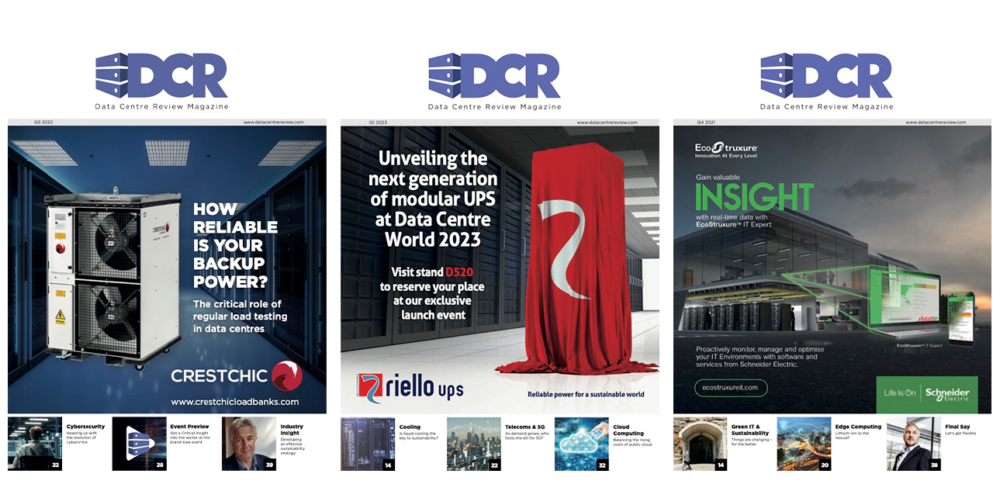Peter Miles, VP of Sales at VIRTUS Data Centres, explores why colocation and private cloud strategies are reclaiming centre stage as organisations grapple with rising AI demands, cost pressures, and new regulations.
Enterprise IT strategies are often in a state of flux. The rise of AI, escalating cloud costs and evolving regulatory requirements are forcing organisations to rethink how they manage infrastructure. While hyperscale cloud providers have transformed IT operations, a one-size-fits-all approach is proving costly and, in many cases, impractical. As a result, enterprises are re-evaluating private cloud and colocation strategies, not as relics of the past, but as essential components of a modern, high-performance IT stack.
Why the public cloud model is re-emerging
The cloud promised flexibility, but for enterprises running large-scale AI workloads, it can fall short of delivering on cost-efficiency. Training deep learning models, running inference at scale and managing high-performance computing (HPC) workloads require immense processing power. In public cloud environments, this can quickly lead to runaway costs, unpredictable billing, and latency challenges.
Some AI-driven businesses are shifting back to private and hybrid cloud setups to gain better cost predictability, optimise performance and avoid vendor lock-in. Private data centres and colocation facilities, equipped with high-density GPU infrastructure and tailored connectivity, offer a viable alternative.
Colocation as a strategic advantage
Colocation is no longer just about renting rack space – it has evolved into a sophisticated enabler of hybrid and private cloud strategies. Enterprises seeking control over their infrastructure without the burden of owning and managing an entire facility are turning to colocation providers that offer:
- Custom High-Density Deployments – AI workloads require power-dense environments and modern colocation facilities are designed to handle graphics processing unit (GPU) clusters, liquid cooling and high-bandwidth interconnections.
- Seamless Hybrid Cloud Integration – The ability to directly connect to public cloud providers via high-speed, low-latency interconnects means enterprises can blend private infrastructure with hyperscale capacity as needed.
- Operational Predictability – Unlike public cloud pricing, which fluctuates unpredictably, colocation provides stable costs, making long-term financial planning easier for businesses managing high-compute workloads.
Regulation, data sovereignty and compliance pressures
As governments impose stricter data governance policies, enterprises are being forced to rethink cloud reliance. The era of unrestricted global data flows is ending, with laws such as the EU’s GDPR, the UK’s evolving data protection framework and emerging AI-specific regulations, such as the EU AI Act, are reshaping infrastructure decisions.
Private cloud and colocation environments offer a controlled, auditable space to meet compliance requirements without the ambiguity of shared public cloud environments. For industries handling sensitive data – finance, healthcare and government – this is becoming a non-negotiable factor.
Additionally, sector-specific regulations around AI-generated content, data retention and localisation are becoming more complex. Enterprises operating in multiple jurisdictions must adopt adaptable IT strategies that align with varied regulatory landscapes while ensuring business continuity and security.
Cooling, power and the infrastructure bottleneck
Beyond regulatory concerns, data centre infrastructure itself is facing significant constraints. The rapid expansion of AI workloads is stretching power grids and pushing cooling systems to their limits. High-density AI computing racks generate heat levels that traditional air-cooled environments cannot efficiently manage, leading to a surge in:
- Liquid Cooling Adoption – From immersion cooling to direct-to-chip solutions, advanced cooling methods are now critical to maintaining AI performance without excessive energy consumption.
- On-Site Renewable Energy Use – While sustainability is not always the primary driver, many enterprises are partnering with colocation providers that source renewable power to mitigate long-term energy price volatility.
- Microgrid and Battery Storage Investments – Enterprises are exploring ways to stabilise their power consumption through on-site energy storage and demand-response strategies.
Another pressing issue is the availability of power. Many enterprises looking to expand their data centre footprint are encountering supply constraints, particularly in regions where grid capacity is limited. This is leading to increased competition for space in colocation facilities with existing power allocations, making strategic planning even more critical.
The new enterprise data centre strategy
The debate is no longer ‘public vs private cloud’ – it is about strategically optimising workloads. Enterprises leading the charge in IT infrastructure modernisation are adopting a balanced approach:
- Private Cloud for Mission-Critical AI & HPC Workloads – Performance-sensitive applications are staying on dedicated infrastructure where cost and latency can be optimised.
- Colocation for Scalable, High-Density Compute – Businesses that need flexibility without full-scale data centre ownership are leveraging colocation for expansion.
- Hybrid Cloud for Elasticity – Enterprises are keeping the ability to burst into the public cloud when demand spikes, without over-relying on hyperscalers for daily operations.
- Edge Computing for Low-Latency Applications – As real-time processing demands grow, companies are leveraging edge computing in conjunction with colocation to improve latency-sensitive workloads.
What comes next?
Looking ahead, the most resilient IT strategies will be those that embrace modular, flexible infrastructure. With AI shaping the next generation of enterprise workloads, businesses must rethink how they structure their compute environments. Colocation will continue to play a key role, but its role is evolving beyond traditional data centre outsourcing – it is becoming a core component of AI-ready, high-performance IT ecosystems.
One major trend to watch is the development of AI-optimised colocation spaces, where facilities are designed specifically to house high-density AI hardware with cutting-edge cooling and power management. Enterprises investing in these environments will gain a significant competitive edge in scaling AI workloads efficiently.
Similarly, the growth of interconnected data ecosystems – where colocation facilities serve as hubs for cloud, network, and AI infrastructure – will redefine how enterprises manage data and workloads. Rather than treating colocation as a standalone solution, businesses will leverage it as a control point for multi-cloud orchestration, workload balancing, and compliance management.
Scaling smartly in an AI-driven world
As enterprises scale their AI and high-performance computing workloads, a strategic approach to infrastructure is essential. The days of assuming that the cloud is always the best option are over. Instead, businesses are focusing on:
- High-Performance Infrastructure – AI is demanding faster, more efficient hardware setups, making high-density colocation a preferred alternative to public cloud scalability issues.
- Cost Transparency and Control – Businesses are moving toward predictable spending models, reducing reliance on hyperscalers that charge premium rates for AI-optimised infrastructure.
- Integrated Workload Management – The ability to move workloads between public and private environments, based on cost and performance needs, is becoming a competitive differentiator.
The future of enterprise IT is not about choosing between cloud and colocation – it’s about building a hybrid ecosystem that maximises efficiency, performance and financial sustainability. Businesses that master this balance will not only optimise AI-driven innovation but also set the standard for the next era of data centre evolution.



